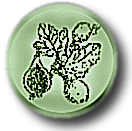Subsystem: Bacterial checkpoint-control-related cluster
This subsystem's description is:
Conserved cluster of Bacterial checkpoint controller protein DisA with di-adenylate cyclase activity, a hypothetical protein and Phosphoglucosamine mutase (EC 5.4.2.10).
The octameric DisA protein complex has structurally linked nucleotide-binding and DNA-binding HhH domains and the nucleotide-binding domains are bound to a cyclic di-adenosine phosphate such that DisA is a specific di-adenylate cyclase. The di-adenylate cyclase activity is strongly suppressed by binding to branched DNA, but not to duplex or single-stranded DNA, suggesting a role for DisA as a monitor of the presence of stalled replication forks or recombination intermediates via DNA structure-modulated c-di-AMP synthesis. The resulting cyclic diadenosine phosphate, c-di-AMP, is reminiscent but distinct from c-di-GMP, a prokaryotic regulator of complex cellular processes.
The the size of the "Uncharacterized secreted protein associated with spyDAC" is very variable.
The "Phosphoglucosamine mutase (EC 5.4.2.10)" catalyzes the interconversion of glucosamine-6-phosphate into glucosamine-1-phosphate, an essential step in the biosynthetic pathway leading to the formation of peptidoglycan precursor uridine 5'-diphospho-N-acetylglucosamine. Insertional glmM mutant of S. gordonii did not produce GlmM, and had a growth rate that was approximately half that of the wild type. Morphological analyses clearly indicated that the glmM mutation causes marked elongation of the streptococcal chains, enlargement of bacterial cells, and increased roughness of the bacterial cell surface. Furthermore, the glmM mutation reduces biofilm formation and increases sensitivity to penicillins. Compared with the wild type glmM mutation resulted in increased sensitivity to PMN-dependent killing. GlmM may be required for synthesis of firm peptidoglycans for resistance to bacterial cell lysis.
For more information, please check out the description and the additional notes tabs, below
| Literature References | Identification of a Streptococcus pyogenes SF370 gene involved in production of c-di-AMP. Kamegaya T Nagoya journal of medical science 2011 Feb | 21614937 | Structural biochemistry of a bacterial checkpoint protein reveals diadenylate cyclase activity regulated by DNA recombination intermediates. Witte G Molecular cell 2008 Apr 25 | 18439896 | Identification of the Streptococcus gordonii glmM gene encoding phosphoglucosamine mutase and its role in bacterial cell morphology, biofilm formation, and sensitivity to antibiotics. Shimazu K FEMS immunology and medical microbiology 2008 Jul | 18462386 |
|---|
| Diagram | Functional Roles | Subsystem Spreadsheet | Description | Additional Notes | |||||||||
Oops! We thought there was a diagram here, but we can't find it. Sorry
Conserved cluster of Bacterial checkpoint controller protein DisA with di-adenylate cyclase activity, a hypothetical protein and Phosphoglucosamine mutase (EC 5.4.2.10). The octameric DisA protein complex has structurally linked nucleotide-binding and DNA-binding HhH domains and the nucleotide-binding domains are bound to a cyclic di-adenosine phosphate such that DisA is a specific di-adenylate cyclase. The di-adenylate cyclase activity is strongly suppressed by binding to branched DNA, but not to duplex or single-stranded DNA, suggesting a role for DisA as a monitor of the presence of stalled replication forks or recombination intermediates via DNA structure-modulated c-di-AMP synthesis. The resulting cyclic diadenosine phosphate, c-di-AMP, is reminiscent but distinct from c-di-GMP, a prokaryotic regulator of complex cellular processes. The the size of the "Uncharacterized secreted protein associated with spyDAC" is very variable. The "Phosphoglucosamine mutase (EC 5.4.2.10)" catalyzes the interconversion of glucosamine-6-phosphate into glucosamine-1-phosphate, an essential step in the biosynthetic pathway leading to the formation of peptidoglycan precursor uridine 5'-diphospho-N-acetylglucosamine. Insertional glmM mutant of S. gordonii did not produce GlmM, and had a growth rate that was approximately half that of the wild type. Morphological analyses clearly indicated that the glmM mutation causes marked elongation of the streptococcal chains, enlargement of bacterial cells, and increased roughness of the bacterial cell surface. Furthermore, the glmM mutation reduces biofilm formation and increases sensitivity to penicillins. Compared with the wild type glmM mutation resulted in increased sensitivity to PMN-dependent killing. GlmM may be required for synthesis of firm peptidoglycans for resistance to bacterial cell lysis. Streptococcus pneumoniae SP3-BS71 no stop codon in DiaA gene Streptococcus pneumoniae SP3-BS73 no stop codon in DiaA gene | |||||||||||||




